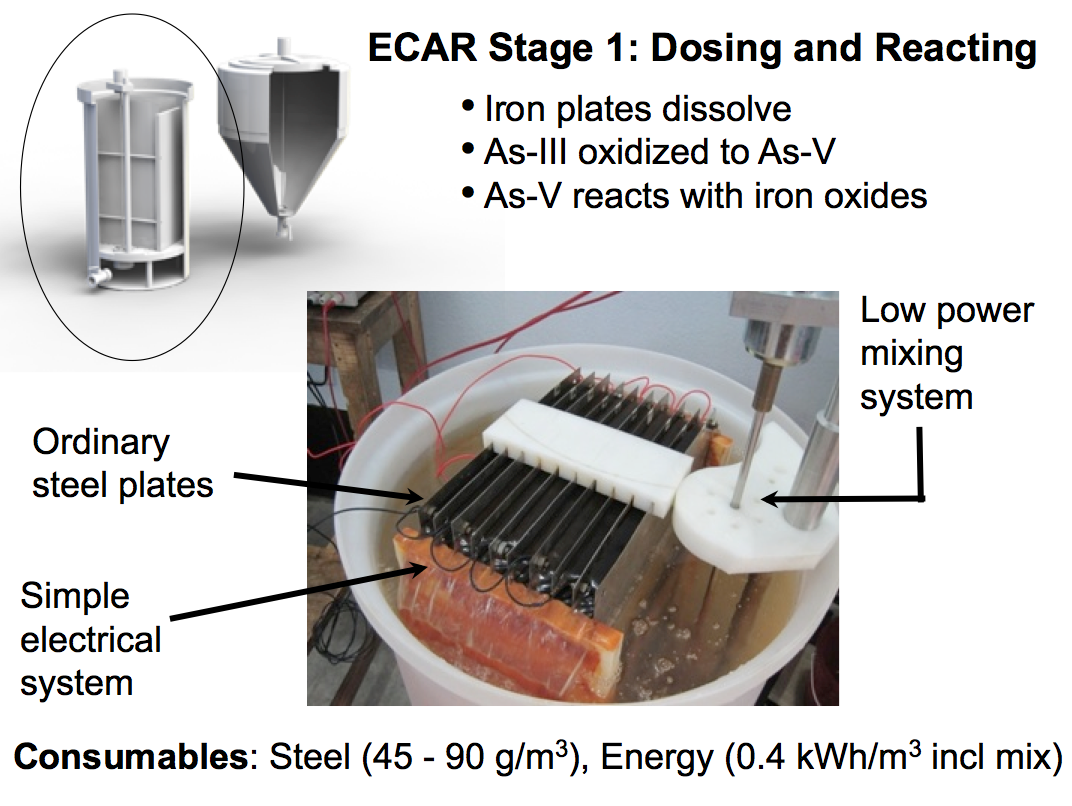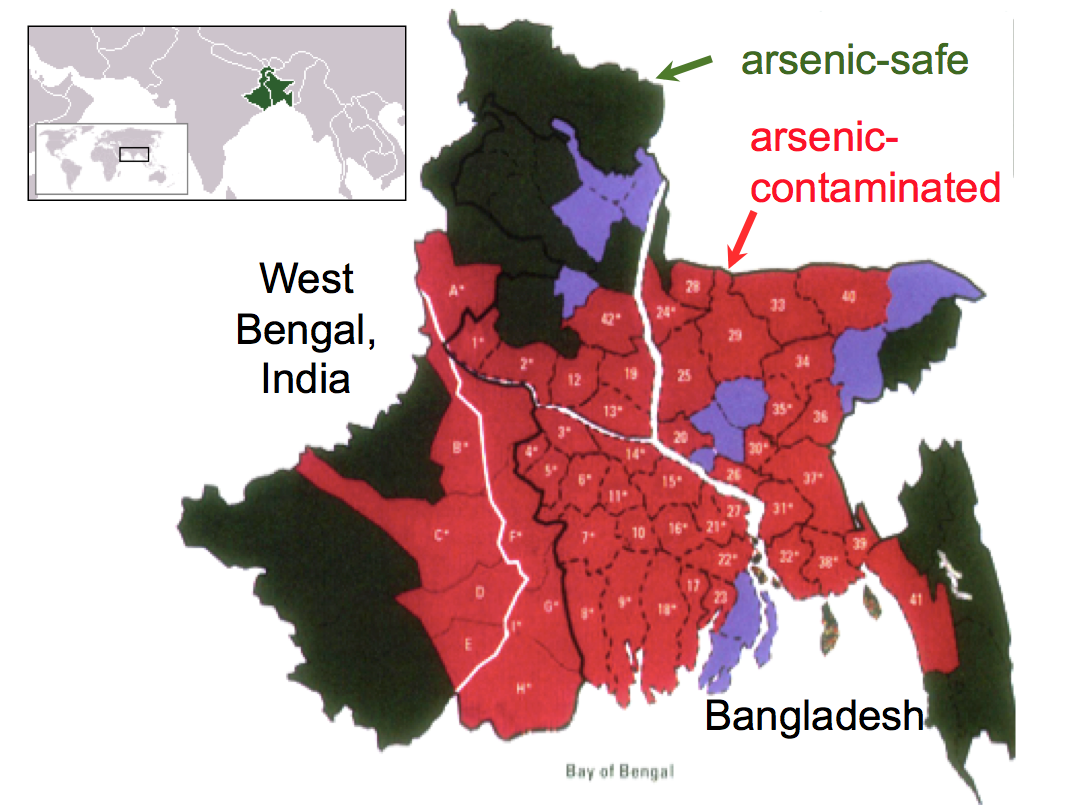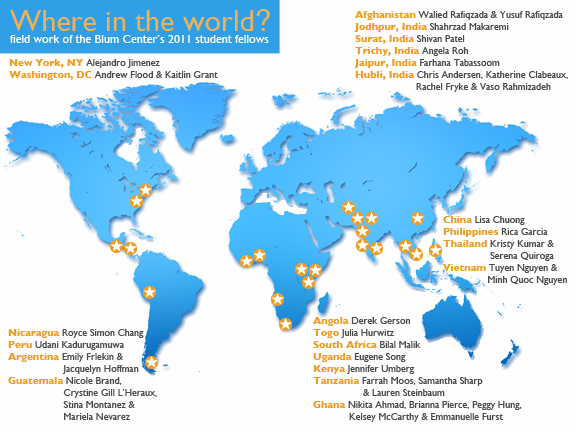Author:
Javier Kordi
Abandoned arsenic water filters
litter the village of Amirabad, India like archaic ruins. For years, the community has seen foreigners come and go, bringing the promise of clean water and leaving behind hollow philanthropic gestures. Arsenic- contaminated ground waters have created the largest mass poisoning in human history. In Bangladesh alone, 40 million people are exposed to arsenic through their tube wells. From Latin America to Asia, arsenic-laden water has plagued the lives of millions.
Working in conjunction with
the Blum Center for Developing Economies and the Lawrence Berkeley National Labs, professor Susan
Addy and her team of scientists have brought something new to the water table: a sustainable model for water purity— the Electrochemical Arsenic Remediation project (ECAR).
ECAR differs from its predecessors in its mode of arsenic extraction. The elusive arsenic particles cannot be removed with traditional filtration— they will not settle or get retained. ECAR works by literally grabbing these particles and dragging them to the bottom of a water basin, separating them from the clean H2O. It is a simple procedure.
First, a steel plate is placed into a tub of water. Then an electrical current
is passed through the steel, creating millions of rust particles. As the rust expands, it electrochemically binds
to arsenic. The rust-bonded arsenic settles to the bottom of the basin and the final step—adding Alum, a water coagulant—allows the amalgamation and separation of the poison. The 100 liter prototype produced clean water that was indistinguishable from bottled water, using only as much energy as a CFL light bulb.
But even the most brilliant of technologies cannot succeed if they are not embraced and maintained
by the local community. “The technology is maybe 20 percent of
the problem,” professor Addy said. “The social situation, making it work sustainably, is maybe 80 percent of the problem.” Often times, water projects fail because they are a one-time gift from a donor. Working with financial institutions, a social marketing firm and local governments, the ECAR project will make the delivery of clean water part of the community’s livelihood. The product of ECAR (clean water) will become a good, to be sold and profited from in an open market, thus creating an economic incentive for continued production.
Professor Addy explained the plan
for this year: “We’ve got two pilot projects planned this year that will serve water to about 2,500 students, maybe one to two liters per day, operating for several months.” As children learn about water safety in their classrooms, the neighboring water plant will transform the school into a community center—a nexus for health and education. Ultimately, the plant will provide jobs for the local people. While providing free water to children, the excess that is created can be sold to the community. ECAR aims to become a self-sustaining water plant, both economically and technologically. Because the government has an interest in increasing student enrollment, professor Addy believes there is potential for partnering with India’s Ministry of Education to further subsidize the project.

At the end of February, two scientists, Christopher Orr and Sivarama Satyam, will depart from Berkeley
to spend six months in India testing out the new 500 liter prototype. After working with a manufacturer in Mumbai, the prototype will be shipped to Jodhpur University in Calcutta for a few months of testing. If all goes well, this prototype will be moved to the school in Amirabad, India, where it will provide six months of free water to local school children. According to Sivarama, local governments and communities are eager to adopt the technology, particularly after the success of the initial model. With continued successes, the full implementation of ECAR and the cleansing of the water table will soon be a reality.




